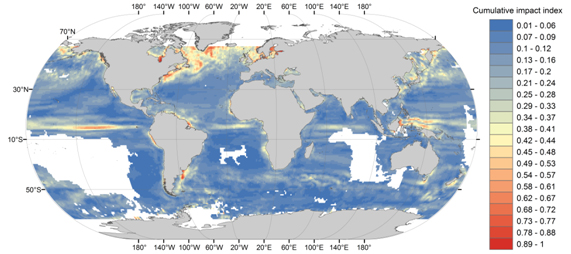The year 2016 has been the hottest on record, reflecting a generally rising trend in the Earth's temperature. Understanding the global distribution of these changes is extremely important to be able to assess the threats that local ecosystems must face. Is this trend the same everywhere around the world? How can this be determined in an environment as remote, vast and inaccessible as the ocean? This study determined that there are places where the temperature increase and associated environmental changes have been much greater than elsewhere. Remote sensing data gathered over more than 30 years from a whole constellation of satellites orbiting our planet and imaging its surface allowed the authors to look at our planet from the right perspective. This information was used to determine how the temperature, productivity and currents of our oceans have changed over the last three decades for the entire planet. Climate-driven environmental changes were found, not surprisingly, not evenly distributed. However, by overlaying the areas affected by climate-driven change with areas of high biodiversity, particularly vulnerable areas of ocean located near the poles and the equator were identified. For instance, the North Sea, between America and Europe, and all the marine areas connected by the Labrador Current have experienced one of the largest global increases in ocean temperature. Near the equator, there has been a large increase in the velocity of marine currents. All of these changes are likely to affect the marine organisms living in those places. This study contributes to the international effort to mitigate the causes and consequences of climate change. Ramírez et al (2017) Climate impacts on global hotspots of marine biodiversity. Sci Adv 3 e1601198 DOI: 10.1126/sciadv.1601198
http://advances.sciencemag.org/content/3/2/e1601198

 Open Call for Research Projects in ICTS-Doñana!
Open Call for Research Projects in ICTS-Doñana!



